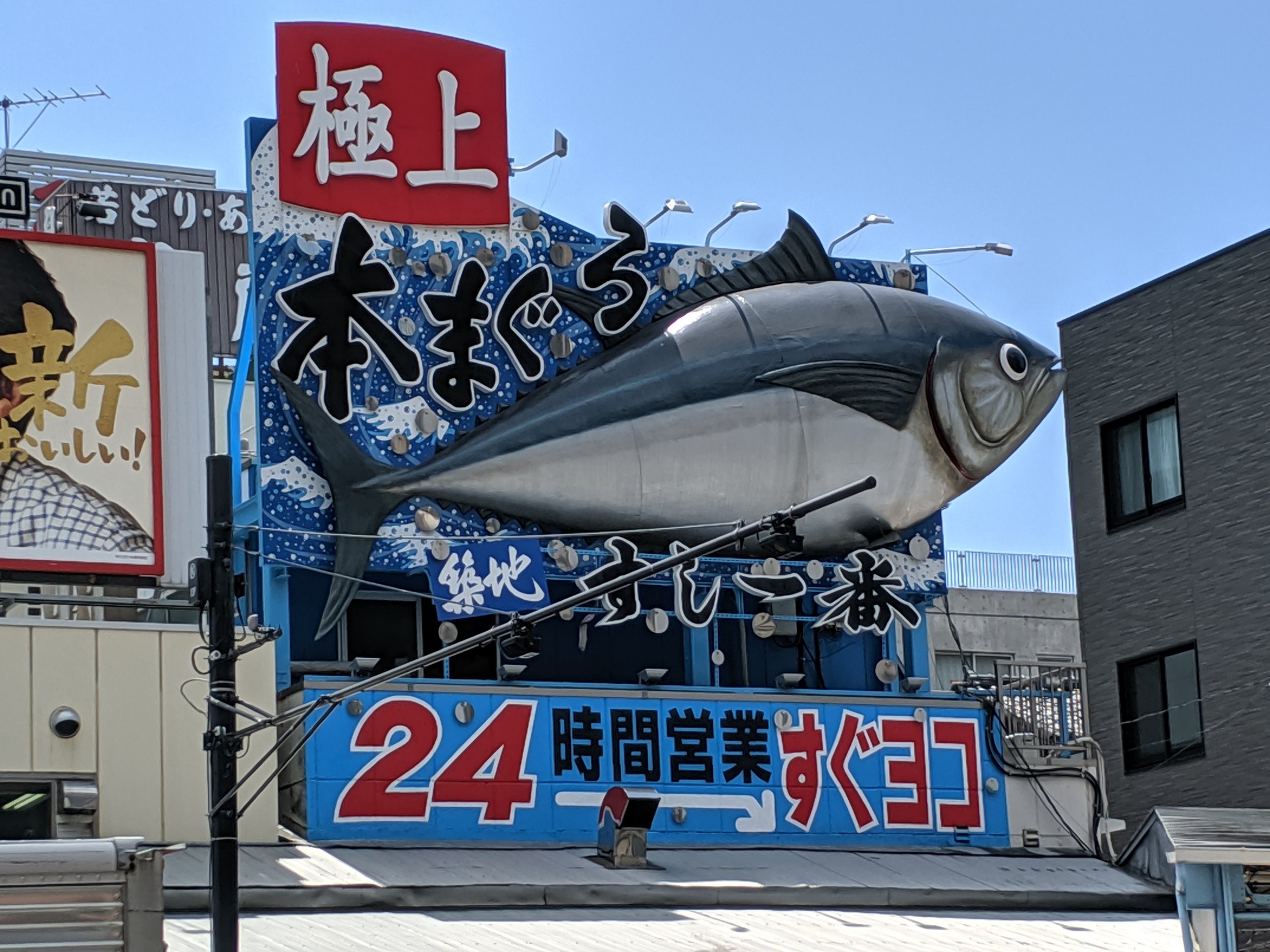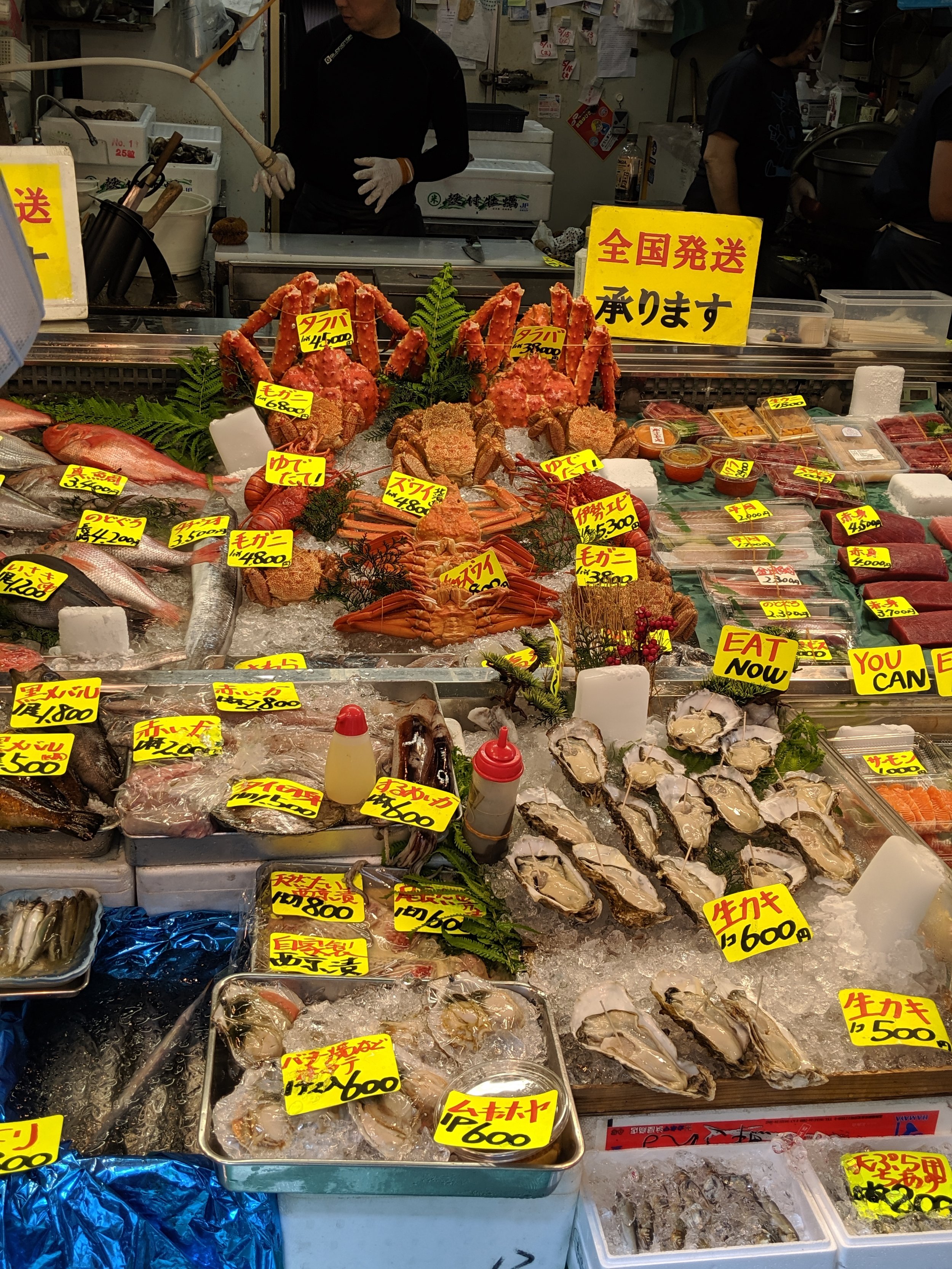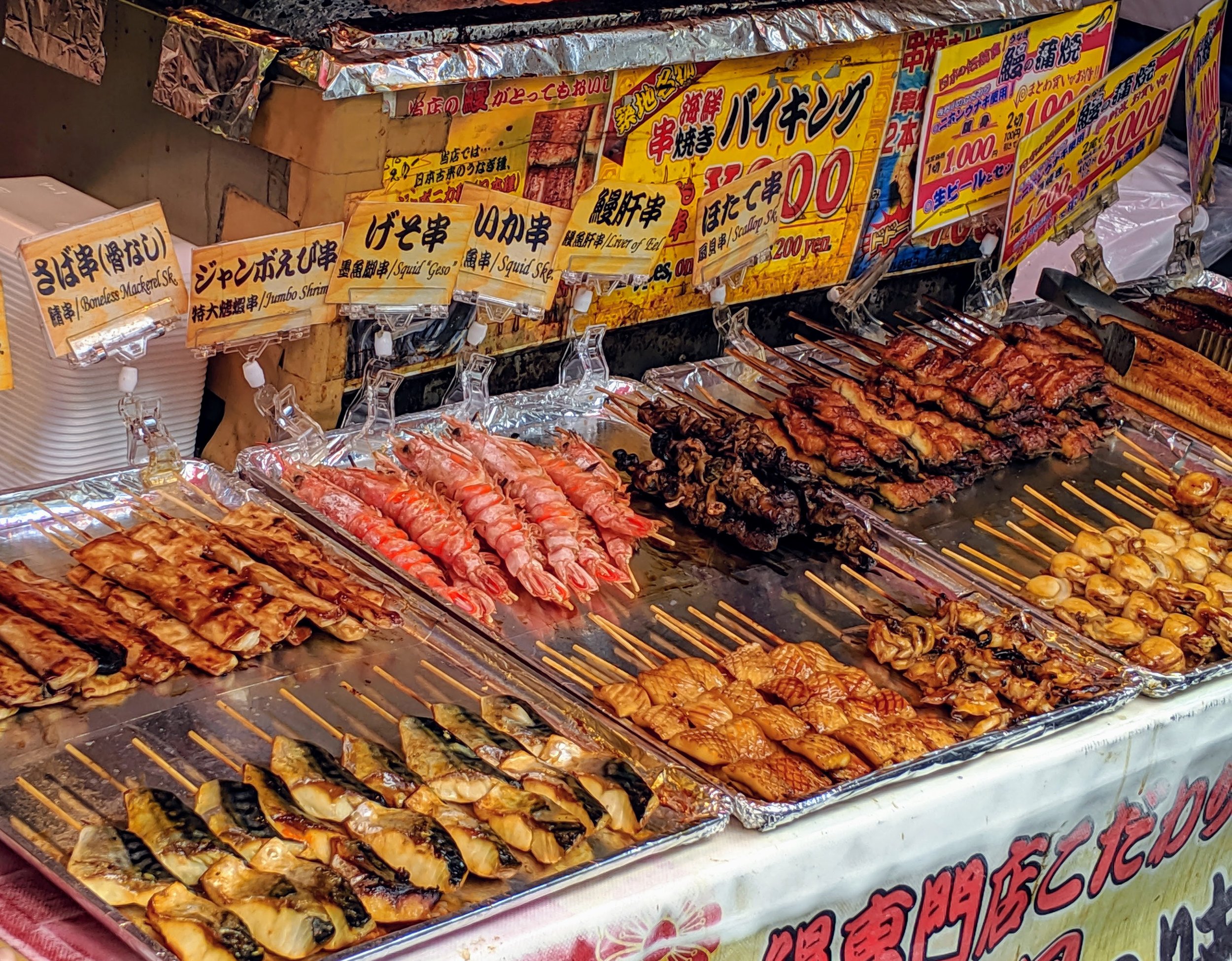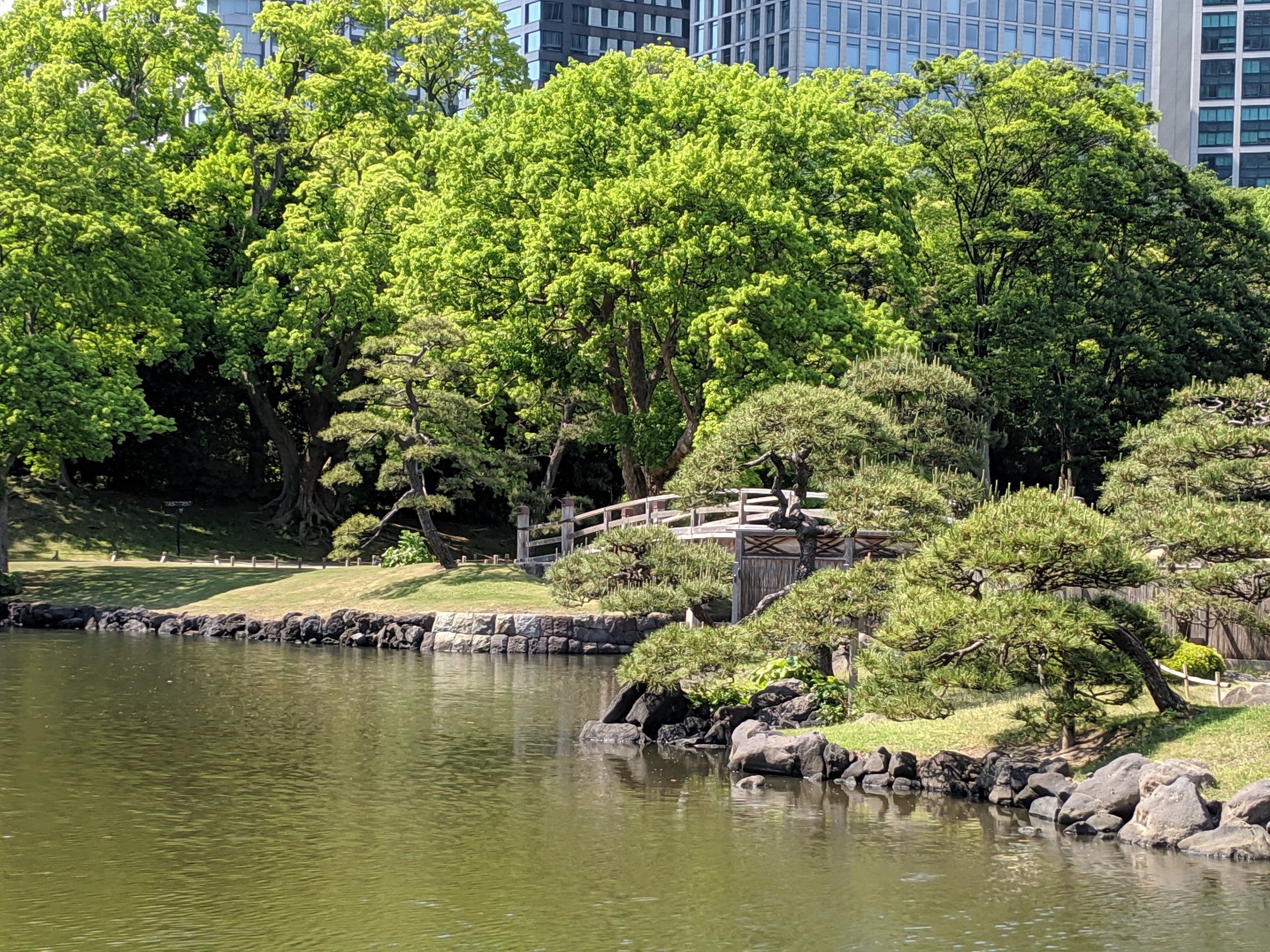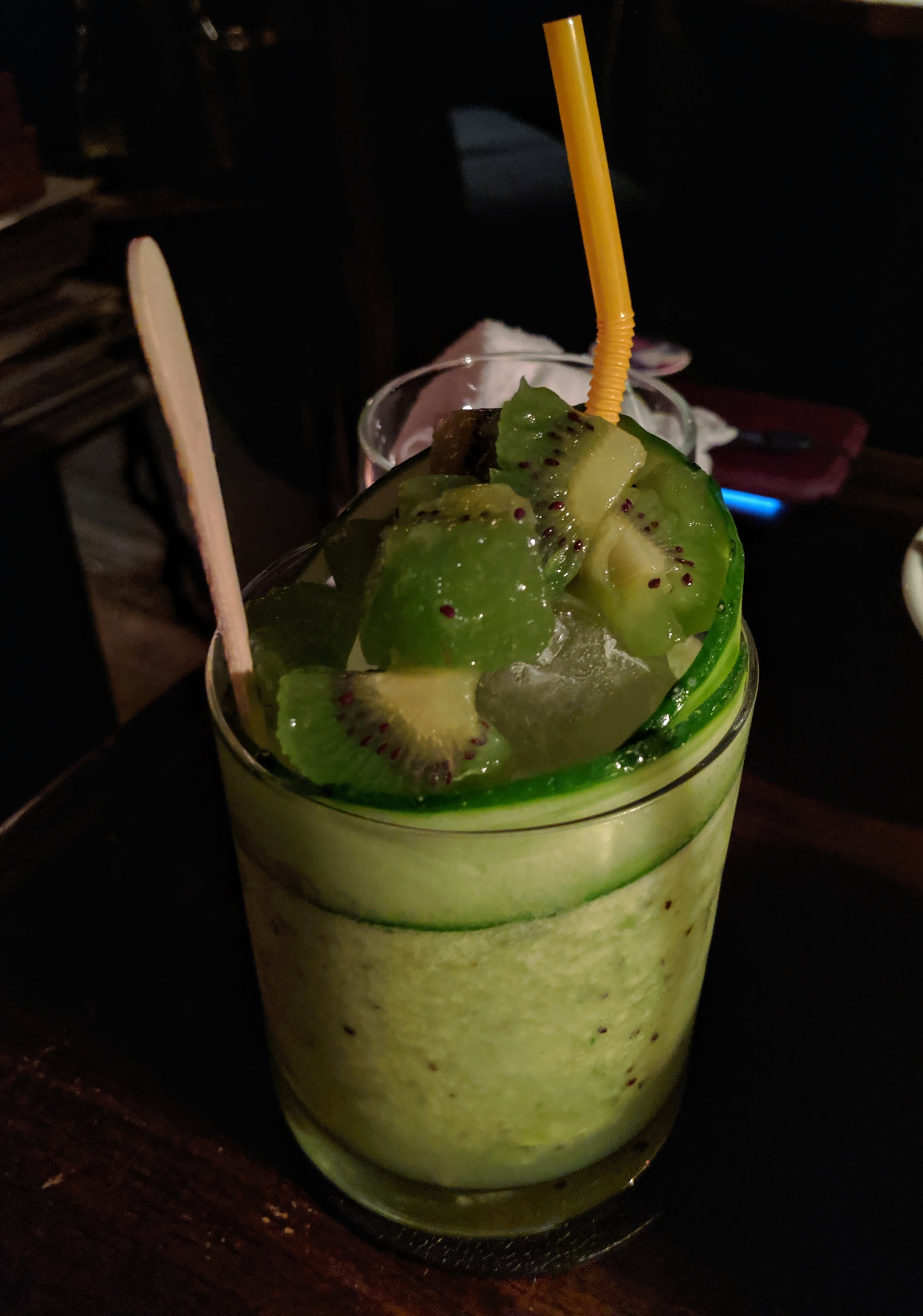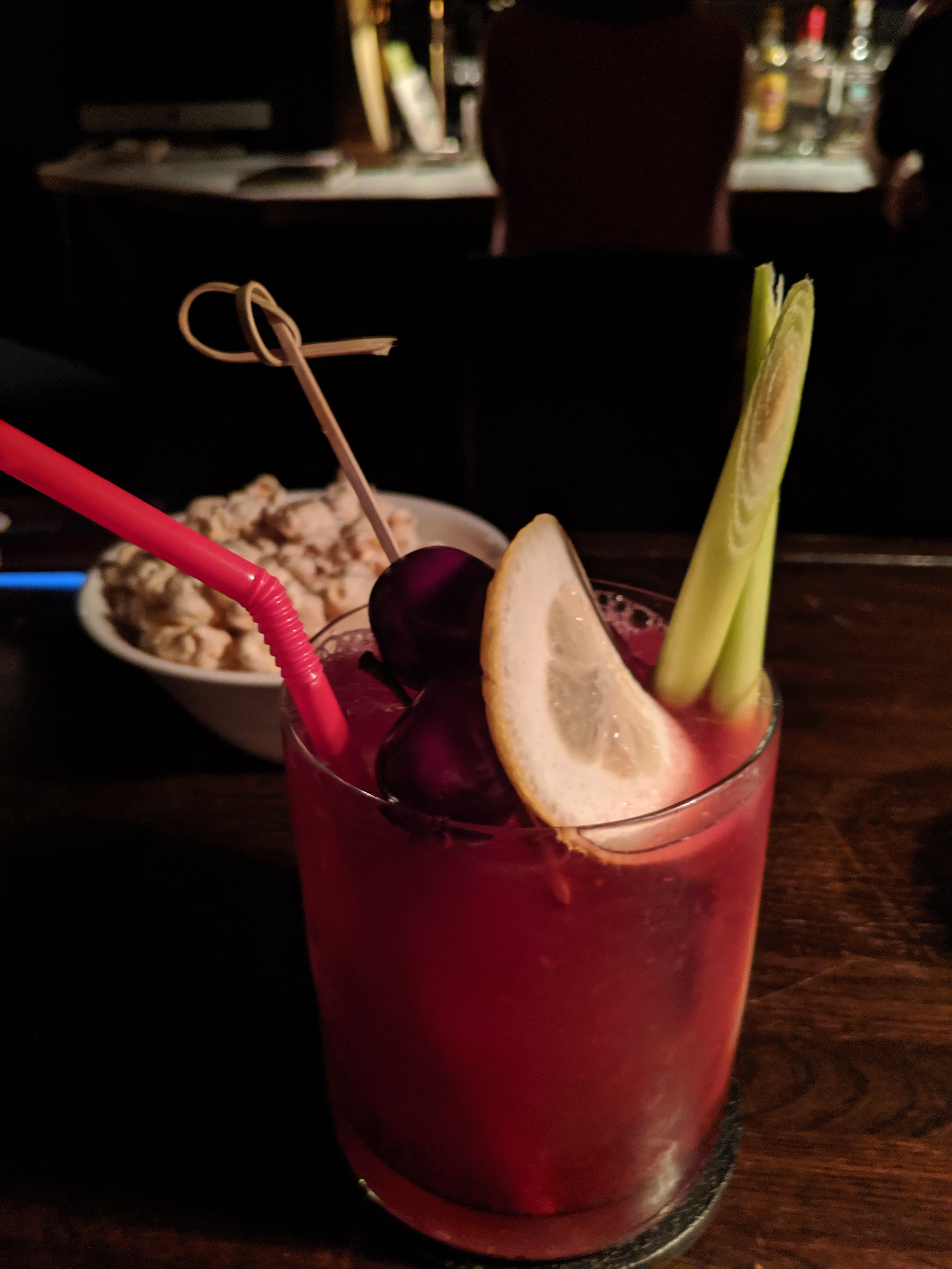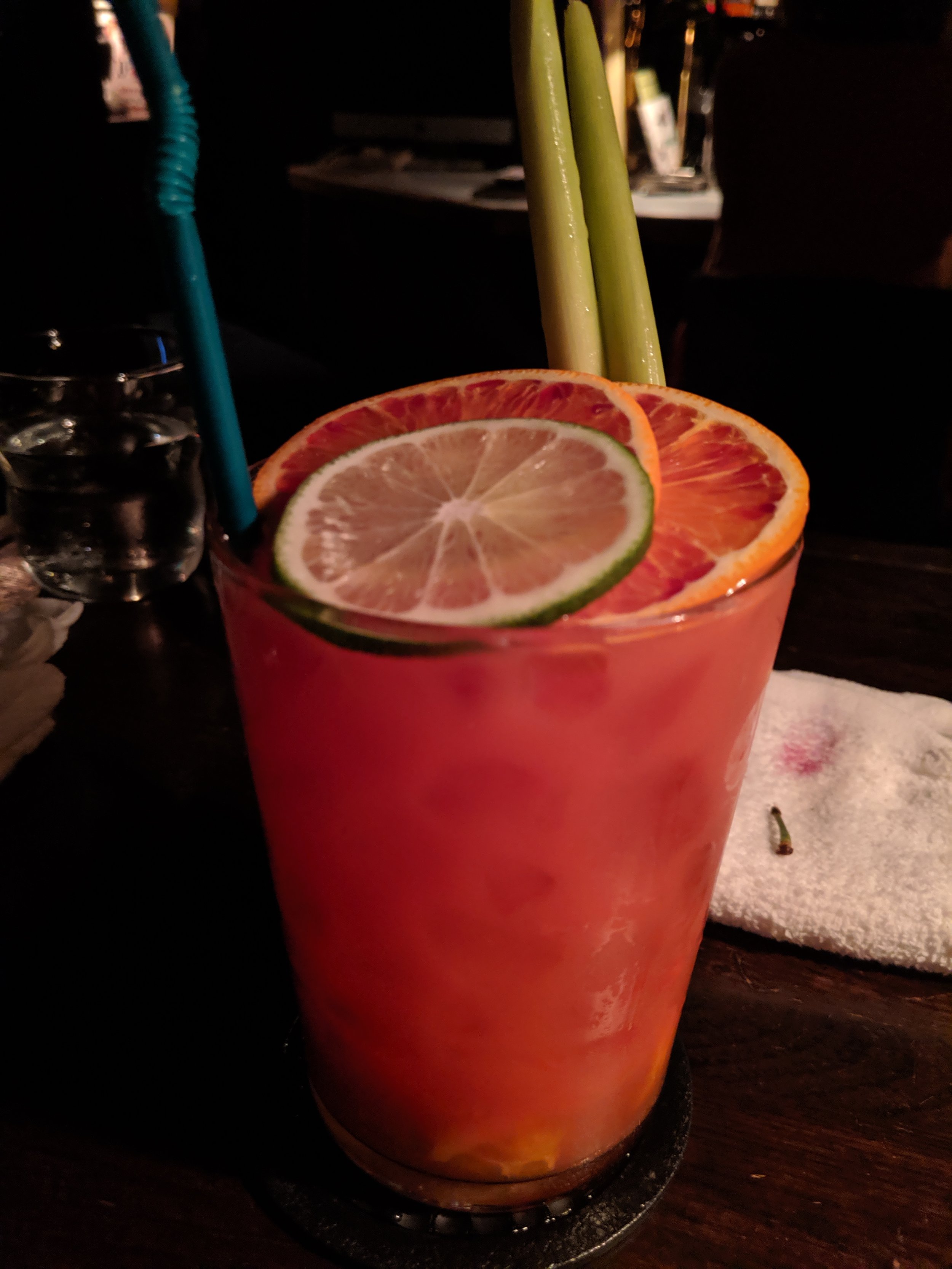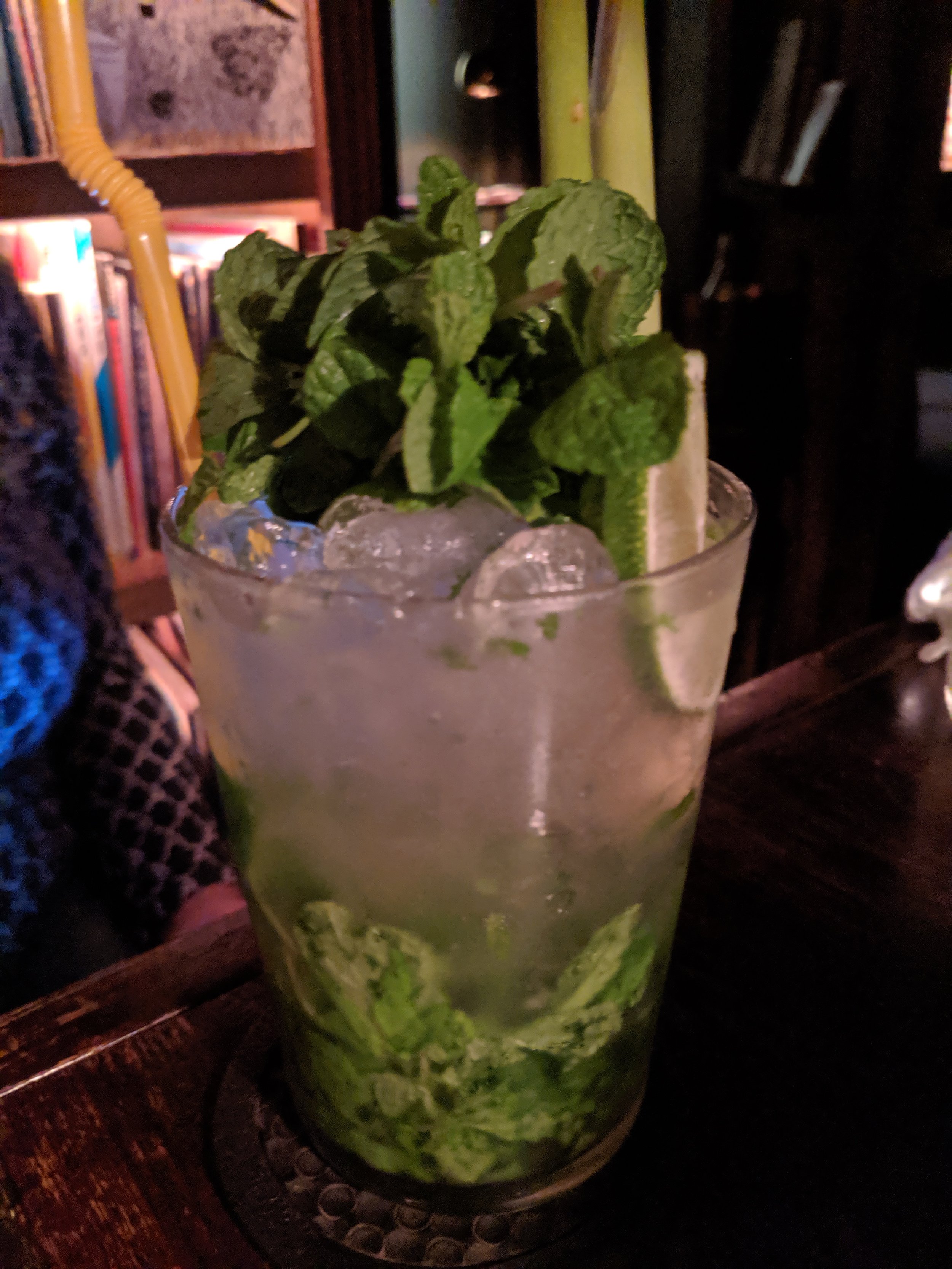Your Ultimate 7-Day Itinerary for Tokyo, Japan
Disclosure: Please note that some of the links below may be affiliate links, and at no additional cost to you, I earn a commission if you make a purchase. I recommend only products and companies I use and the income goes to keeping the site community supported.
One Week in the Ultimate Megalopolis
Tokyo. It is one of the great world capitals, boasting a power-punch cuisine, global financial hub status, and a rich and complex history on par with any European hotspot. With its 9.2 million people, Tokyo is a bustling metropolis with a beautiful past and an electric future.
With the 2020 Olympics on the horizon, the city will be seeing more tourists than ever. But many visiting Tokyo are overwhelmed at the prospect of planning a trip to such a massive city.
This guide will help you map out the perfect week in Tokyo so that you can get all the best of Tokyo: a handle on the art and history, a taste of the town, a sense of serenity at gardens and temples, and much more. So let’s tackle Tokyo, one of the world’s most excellent cities!
DAY 1: Classic Japan
On this first day, we’re going to hit the stereotypical highlights you think of when you imagine Tokyo: sushi/seafood, serene gardens, electric cityscapes, and Samurai. Buckle up, you are in Tokyo now!
TSUKIJI FISH MARKET
This is your breakfast spot on the first day. Welcome to Tokyo - never stop eating!
While this market used to include a massive fish market, that has now moved elsewhere. To be honest, I prefer it - I don’t like when tourists swarm early morning fish markets, disrupting local business.
Now, this market is more focused on smaller scale purchasing, and all the better. You’ll find lots of bites as you walk, from seafood to fruit and meats to sweets. There is nothing better than a street market with supreme quality ingredients, and this is the best in Tokyo, a world-class culinary hotspot.
Since you are buying bites, prices are reasonable and you can try lots and lots of delights. Just make sure you’re carrying cash.
You will also find delightful shopping in this area, especially ceramics, tablewares, chopsticks, and other food-related wares. This is an absolute must for your Japanese visit, and a supreme introduction.
CHLOE’S TIP: There are free, clean public bathrooms with kid-changing tables on the eastern edge of the market.
From here, it’s a short walk over to the Hamarikyu Gardens, which will be our gardens experience to start off our time in Tokyo.
HAMARIKYU GARDENS
This is a wonderful opportunity to take a walk in Japanese gardens, no matter the season. When you arrive at the Hamarikyu Gardens, you’ll get a great map at the start which tells you which flowers you can expect to be in season, so you can be sure to get the most out of your time.
The ponds and bridges are lovely, and you’ll enjoy strolling the loop around the gardens to see different scenes. I appreciate the garden-oasis feel with the skyscrapers around you.
Make sure you find the falconry spots and teahouses for photos! These little buildings are well-signposted and labeled so you can learn more about life in Tokyo when these gardens were owned by a wealthy aristocratic family.
SHINJUKU
This used to be the red-light district of Tokyo, and it’s still the best spot of neon madness. Here’s where you’ll find lots of kobe/wagyu restaurants, bars, and the famous Robot Restaurant. This is a great place to arrive in the late afternoon. Walk around and enjoy the crazy vibe!
THESE: THE SEXIEST BAR IN TOKYO!
These is a small bar set in a moody library. Dimly lit and intimate, the ambiance is unmatched. Your waiter brings you a bowl of fruit; you choose your combination and your alcohol, and the bartender makes you a unique concoction. Utterly memorable and delicious. This is the perfect way to end your first night.
DAY 2: Holy, Heights, and Shopping
On this second day, we’re going to the holiest icon of Tokyo: Senso-ji Temple. But we’ll also do some shopping, both at street markets and malls, and climb to great heights in the Skytree.
SENSO-JI / ASAKUSA COMPLEX
This is an easy place to start your day - after breakfast, head over to the Asakusa subway stop, where it’s a very easy walk over to the temple complex.
First, you’ll pass through the Kaminarimon Gate (Thunder Gate!), a sturdy entrance guarded by fierce statues. A gate has stood here, guarding this holy area, since the 10th century. Shinto gods Fūjin and Raijin guard the front of the gate, while Buddhist god Tenryū and goddess Kinryū guard the sides. It’s an impressive way to start your tour of the area.
Then you’ll shop along Nakamise-dōri, my absolute favorite place to shop in all of Japan for the widest variety of affordable, authentically Japanese souvenirs. The long street is packed with shops, and there are numerous side-streets as well. There are excellent places to pick up traditional shoes and socks, pre-packaged foods, toys and trinkets, and much more.
Make it to the end of the street, and you’ll hit the main event: the breath-taking Senso-Ji Buddhist temple. You’ll see Buddha statues in the green gardens around the complex, and they almost seem to guard the fringes. Of course, you can’t miss the five-story pagoda. You can also try your hand at shaking sticks to get your fortune along the sides.
The temple itself is massive. I’ll be honest, I cried the first time I saw it. It’s Tokyo’s oldest temple, dating back to the 7th century and dedicated to the Buddhist bodhisattva Kannon. The temple was destroyed in WWII, and when the Japanese government rebuilt it in the modern era, it became a symbol of peace and a better future for Japan. Buy some blessed omamori (Shinto charms) and get caught up in the rich colors and clean lines of the harmonious architecture.
Asakusa Shrine
Next door, the Shinto Asakusa shrine is also worth a stop. This Edo-period shrine, commissioned by Tokugawa Iemitsu in 1649CE, actually honors the three men who built the Senso-ji temple next door (Shinto is the folk religion of Japan, and often deifies notable historical figures). The building itself is an impressive site, as it is one of Tokyo’s oldest surviving structures, having escaped unscathed from the Tokyo bombings of WWII.
Depending on you, this part of your day could take an hour, or it could take several. Personally, I really enjoy the shopping (and I’m not a shopping person) in this area more than anywhere else because there is a nice mix of souvenirs. And the shrines are very photogenic and memorable, but also often crowded. So YMMV.
TOKYO SKYTREE
If street shopping isn’t your style, and you’re more into stores and AC, the second half of today’s itinerary might be more your style. If you have followed this route, head out the eastern side of the whole complex (so right near Asakusa Shrine), and it’s about 20 minutes walk to the Tokyo Skytree.
CHLOE’S TIP: You can choose to go to floor 350 only, or to floors 350 and 450. You cannot choose to only go to floor 450 even though they sell tickets that way. It’s confusing, I know, I was annoyed too. Either floor 350 or 350+450, not just 450.
The Tokyo Skytree is the second tallest structure in the world, so boom! Bucket List for me! Obviously, if you want to go to the top of the Skytree, you’ll have a fantastic 360° view of the city. If you’ve just come from being wowed at Senso-ji and Asakusa, being able to then look at them from above is just awesome.
There are some elevators, and some stairs. At one point, you’ll have the chance to walk over the glass part and look down. Let me be clear: that glass bridge is the most underwhelming square foot of real estate in Tokyo. Super disappointing. Come for the view out on the horizon, not beneath you. On a clear day, you can see Mt. Fuji in the distance.
For people into night cityscapes, Skytree is open past dark and Tokyo looks totally different at night. There are also some exhibits (while I was there, they were Hello Kitty themed) along the way. There are places set up for photo-ops as well, and fun for kiddos.
OSHIAGE MALL
Once you are done in the Skytree, exit the tower itself into the main building at its base, which has a subway station (if you’re heading out) and a mall. The Oshiage Mall is a behemoth, and a mix of Western and Japanese stores. For mall fans, this is your afternoon.
There is an excellent Pokemon store here, as well as a Hello Kitty shop. If you can’t make it to Akihabara, this is your next best choice.
CHLOE’S TIP: Save time and plan ahead using the mall’s excellent website. Stores are even categorized by souvenirs, images of Mt. Fuji, and other topics of interest to tourists.
Both Skytree and the Oshiage Mall have a multitude of food options at various budgets, with many excellent Japanese and Western options.
DAY 3: Time to Play
TEAMLAB BORDERLESS AND PLANETS
There are no words to describe this art installation. It will blow your mind, transport your imagination to its limits, and change the way you think about color, light, and dimension. It’s unlike anything else in the world. This is a morning spent in pure fantasy.
There are two options: Borderless and Planets. I only went to Borderless, so cannot compare. I recommend looking at both online and deciding for yourself. You can do both in one day, but Planets has pre-set times for the tickets.
CHLOE’S TIP: If you choose Borderless, go as soon as it opens, or line up beforehand, if you can. Otherwise, you’ll be waiting a long time. Be aware of your ticket time for Planets, and don’t miss your entry window.
JAPANESE SPORT
Of course, immersing yourself in a culture means enjoying the sports that locals love. And the Japanese are very passionate about their sports, especially two which you can easily observe as a visitor: baseball and Sumo!
BASEBALL AT THE TOKYO DOME: Check out the Baseball Hall of Fame in the amusement park of the Tokyodome Complex. It is well-signed in English and educational. The Tokyodome Complex has awesome rides and arcades for kids to spend a whole afternoon.
If you can attend a baseball game, do so - it was one of the greatest sporting experiences I’ve ever had! You can buy your tickets online from the Giants, and pick them up from machines at the entrance (in English).
The crowds are unbelievable, and the energy is unparalleled. There are super food options in the stadium too! And the young women who carry around kegs are so kawaii! Much more exciting than an American game, Japanese baseball is also an opportunity to hang out with locals and have a blast.
SUMO: Sumo is also a national sport of Japan, and a great way to spend an afternoon in Tokyo. If baseball isn’t in season, Sumo is still an option. This art of large men engaged in full-contact wrestling originated as an ancient Shinto ritual, and became very popular during the Edo period. It is uniquely, and fascinatingly, Japanese.
If you want, you can go see sumo wrestlers up close practicing at a stable. This guide explains your options. For tournaments, there are three held in the Ryoguku Kokugikan (Sumo Hall) in January, May, and September for fifteen days each. You can get walk-up tickets for these tournaments, but they sell out super fast, so you’re much better off buying tickets beforehand for tournaments.
DAY 4: Kawaii Kid at Heart
We’ll start today in a holy spot of Tokyo. But after the serenity of the Meiji Jingu shrine, we’re chasing rainbows in Harajuku, Shibuya, and Akihabara!
MEIJI JINGU
Get off the subway at the Harajuku stop and walk into the park to the west. This atmospheric forest park is a relaxing and fun walk to the shrine. The massive torii gate packs a punch and feels like a perfect match for the tree trunks around you. These evergreen trees were donated by Japanese citizens from across the country to create the forest, a symbol of the people’s love for the Emperor.
Japan experienced a period of Samurai power (good thing you learned all about this at the museum!) and it was not until the rule of Emperor Meiji that Japan lept from a pre-industrial society to a global powerhouse at the beginning of the 20th century. To honor Emperor Meiji for his contribution to Japanese society, he was elevated to status as a Shinto deity and honored with the Meiji Jingu shrine.
Neither the Emperor nor his wife are actually buried here, but they are revered at this site. The inner shrine has its own giant torii, as well as some open-plan buildings often decorated with lovely bonsai trees. Find the walls of sake barrels that have been dedicated - the graceful calligraphy is eye-catching.
When you’re done, head back out the park, back out through the torii, and back to Harajuku. You’ll find Takeshita - just look for the balloon-decorated gate!
HARAJUKU
Walk down Takeshita Street and see the crazy colors. Anime, maids, rainbows, toys, it’s all there, though I’ve been underwhelmed by the overall effect. This is one of those things that you either really connect with, or you don’t, but it’s worth walking through to see the rainbow strangeness.
CHLOE’S TIP: If you have kids, switch the order with the Meiji Shrine. Allow the kiddos to eat all the animal-shaped ice-cream and rainbow candy they want on Takeshita, then have them run it off in the park around Meiji Jingu.
You can walk from Harajuku to Shibuya, and pass Cat Street (another good shopping area) along the way.
SHIBUYA CROSSING
This is downtown business craziness. There are great little souvenir shops in the area, and lots of tall buildings to use to gain new views. I recommend just standing for a few minutes and watching the madness.
AKIHIBARA
The anime and electronics district of Tokyo is nerd heaven. If you want manga, anime, video games, and all the affiliated accouterments that goes with them, this is your one-stop-destination.
Nintendo, Sony, countless manga shops: this is a place where you could lose some hours if you aren’t careful. MCU and DC fans will find plenty to entertain themselves with. Keep an eye out for people in cool costumes and the latest deals in electronics.
MAID CAFE
While you’re in the Akihibara district, find these unique cafes where young women wear maids outfits, serve cute drinks, and dance like cartoon characters. Let’s be clear, there’s nothing tawdry about this - kids are welcome too, and it’s cute, not sexy. You’ll order a drink, food, or play a game with the girls, and it’s all quintessential Japanese delightful weirdness.
The best Maid Cafes are @home and Maidreamin.
There are also owl, kitten, and ferret cafes in this area if cute girls being cute isn’t your thing. Personally, animals in cafes for my entertainment isn’t for me. Live your best life.
CHLOE’S TIP: A very popular activity is to MariKar - essentially riding Mario Karts around Tokyo. There are a variety of companies offering drives of one-to-three hours, different routes, etc. I’d recommend a route that goes through Akihabara and/or Shibuya.
DAY 5: Opportunities at Ueno
We’re going to spend this entire day in the Ueno Park, and there are a variety of options depending on your interests. We’ll make sure to hit some of the temples in the park, and then explore the excellent attractions available. If you are planning to do several of the museums here, Ueno Park is a good option for a day which might have rainy or unpleasant weather.
UENO’S TEMPLES
On the eastern side of the park, find the Kiyomizu Kannon-do Temple. This is a Shinto and Buddhist temple built in 1632CE as part of the large Kan’ei-ji complex. But when the Tokugawa Shogunate ended in 1868, the temple fell into disuse. The lands were turned into the public Ueno park, and Kiyomizu Kannon-do was saved. This was partly because of the circular pine which sits at its side on the hill, which has been an iconic image often painted for its natural beauty.
On the southwest of the park is the Shinobazu Pond, a reedy expanse that is strangely pleasing. Out on a romantic little island is the Shinobazunoike Bentendo Temple complex, a Buddhist temple that honors an Indian Buddhist goddess associated with wealth and good fortune. Because of this, the temple is considered good luck and used as a watchtower.
Side temples in Ueno, like this one, allow for reflection on the teachings of the Buddha. By continuing the use of water plants in the golden decorations, the visitor feels no separation between the temple space and pond wildlife beyond, demonstrating Japanese synergy with nature.
On your way back off the island, stop at the cheeky food stalls and enjoy a bite, appreciating the beauty of Shinobazu Pond around you.
NATIONAL MUSEUM
If you walk all the way through the Ueno Park, you’ll reach the National Museum Complex at the north of the area. This is a museum complex because it is a series of several smaller museums combined. This is both a history and art museum, featuring some of the best works in the country.
This complex includes several buildings; I’d recommend focusing on the main building, which is attached to the archaeology building. Work your way through them numerically to understand the development of Japanese artistic styles.
There are a few reasons I consider this one of the great world museums, on par with the British Museum or the Louvre. First, the museum is beautifully curated, with clear multi-lingual posting that not only explains individual pieces but creates a narrative which transports you through Japanese history.
Second, the museum continually changes which pieces of its collection are on display. I’ve been to this museum multiple times and each time I have been impressed with new works. Third, the museum has excellent facilities and is open extremely late for a museum, allowing you to have a long Ueno day. Finally, this museum has wonderful temporary exhibitions; these aren’t cheap but are absolutely worthwhile.
There are some other attractions I would suggest between the temples and the National Museum. You can fit a few in one jam-packed day, grabbing some food by Shinobazu Pond or in the central area between the zoo and National Museum.
OTHER ATTRACTIONS
Ueno Zoo: This is Japan’s best zoo, and includes giant pandas.
National Museum of Nature and Science: a kid-favorite, this science museum specializes in the wildlife of the Japanese islands.
National Museum of Western Art: art historians will appreciate Japan’s national collection of primarily European art.
EVENING ENTERTAINMENT:KABUKI THEATER
From Ueno head to the Kabuki-za Theater by riding the orange Ginza line to the Ginza stop. This beautifully renovated theater is in a shopping center that sells nice boxed candies and foods.
Kabuki is a traditional form of Japanese theater. It originated in the early 17th century as a form of dance, and evolved over the years to be a high form of art. Kabuki is known for its elaborate costumes, over-the-top drama, and colorful makeup. It is quintessentially Japanese: hyper-stylized, elegant, complex, and mesmerizing. Kabuki has been recognized by UNESCO as an essential artform of the human experience, it’s that special.
It’s very easy to get walk-up tickets for the short evening show, so head over and look for English signs explaining the tourist tickets. Get the electronic translation guide for a couple of bucks - totally worth it to understand what you are seeing.
DAY 6: Disney in Tokyo
You can actually choose between Tokyo Disney and DisneySea. Diehard Disney fans will find it worthwhile to spend a day at each; you can’t do two in one day.
Tokyo Disney is the world’s third-most popular amusement park (after America’s Disney parks), and offers both favorites and uniquely Japanese takes on classics. Perhaps more special is DisneySea, which has themed parks that focus on different maritime settings for fun.
Take your time and explore the websites for these sites. This will help you know what is open during the time of year you’re visiting, and what new attractions are available. There is also plenty of information on how to get to the parks from downtown Tokyo, and what facilities are available for kids.
For those who are not into Disney, check out the additional options at the end of this article. Tokyo has so many excellent museums, there’s something for everyone!
DAY 7: Day Trip Outside the City!
Tokyo is an amazing city with near endless sites, but sometimes you want a change of pace. There are a number of excellent day trips available from Tokyo, but two really stand out because of their ease and access to beautiful landscapes: Nikko and Hakkone.
NIKKO: FOOTSTEPS OF THE GODS
My personal choice, as someone who loves religion, is to head to Nikko, a town about an hour and forty five minutes outside of Tokyo. The burial site and Shinto shrine dedicated to famous Japanese leader Tokugawa Ieyasu are the centerpiece, including the most awe-inspiring decorated gate in Japan.
Click here for my one-day itinerary for Nikko, with all the travel information and background you’ll need to have an easy and contemplative day-trip out of Tokyo!
HAKKONE: FINDING MT. FUJI
For nature lovers, the other excellent day-trip from Tokyo is to Hakkone, for a spectacular view of Mt. Fuji. You’ll take the train down, and then use local transport like cable cars to move around the lake. Hike around to get the best views of Mt. Fuji and appreciate the beauty of Japan’s natural bounty.
The day trip to Hakkone is especially wonderful to do during spring (cherry blossoms) and fall (colored leaves). However, if it is rainy or foggy, you will see nothing. So be flexible and have a backup if the weather isn’t going to be cooperative.
Of course, your day trip to Nikko of Hakkone does not have to be the last day of your trip. I’d actually recommend placing it in the middle of the week, when you’re a bit burned out from the city. And since you do not need to pre-purchase tickets for the trains, temples, or sites, you can be flexible when ordering your days.
ADDITIONAL OPTIONS
There are some other excellent museums and sites around the city that might be an exciting addition to your personal itinerary.
Rikugi-en Gardens: the city’s most beautiful gardens on the outskirts of the city
Ghibli Museum: a museum/wonderland by an animation studio master
Golden Gai Area: an excellent bar scene in the Shinjuku neighborhood
Tokyo Metropolitan Government Building: this Kenzo-designed building shines with municipal sparkle
Edo-Tokyo Museum: the museum of the city’s history
DR. C’S FINAL THOUGHTS
A lot of tourists are afraid of Tokyo before they even board a plane - and it can be an overwhelming city because it is so rich with options. What I love about Tokyo is the ability to mix educational, historical sites with electro-pop fun. Tokyo is an onion, with many layers to peel away.
Each time I go to Tokyo, I find a new city awaiting me. There is so much to see and do that it is a shame to spend less than a week there. Too many people hop on a train and head off, but I recommend slowing down and embracing the hustle of Tokyo.
This is a world capital worth making your own.


